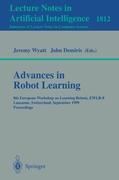jeremy wyatt john demiris (5 Ergebnisse)
Suchfilter
Produktart
- Alle Product Types
- Bücher (5)
- Magazine & Zeitschriften (Keine weiteren Ergebnisse entsprechen dieser Verfeinerung)
- Comics (Keine weiteren Ergebnisse entsprechen dieser Verfeinerung)
- Noten (Keine weiteren Ergebnisse entsprechen dieser Verfeinerung)
- Kunst, Grafik & Poster (Keine weiteren Ergebnisse entsprechen dieser Verfeinerung)
- Fotografien (Keine weiteren Ergebnisse entsprechen dieser Verfeinerung)
- Karten (Keine weiteren Ergebnisse entsprechen dieser Verfeinerung)
- Manuskripte & Papierantiquitäten (Keine weiteren Ergebnisse entsprechen dieser Verfeinerung)
Zustand Mehr dazu
- Neu (4)
- Wie Neu, Sehr Gut oder Gut Bis Sehr Gut (Keine weiteren Ergebnisse entsprechen dieser Verfeinerung)
- Gut oder Befriedigend (1)
- Ausreichend oder Schlecht (Keine weiteren Ergebnisse entsprechen dieser Verfeinerung)
- Wie beschrieben (Keine weiteren Ergebnisse entsprechen dieser Verfeinerung)
Einband
- alle Einbände
- Hardcover (Keine weiteren Ergebnisse entsprechen dieser Verfeinerung)
- Softcover (5)
Weitere Eigenschaften
- Erstausgabe (Keine weiteren Ergebnisse entsprechen dieser Verfeinerung)
- Signiert (Keine weiteren Ergebnisse entsprechen dieser Verfeinerung)
- Schutzumschlag (Keine weiteren Ergebnisse entsprechen dieser Verfeinerung)
- Angebotsfoto (2)
Sprache (1)
Gratisversand
- Kostenloser Versand nach USA (Keine weiteren Ergebnisse entsprechen dieser Verfeinerung)
Land des Verkäufers
Verkäuferbewertung
-
Zustand: Aceptable. : Este libro recopila las actas del 8º Taller Europeo sobre Robots de Aprendizaje, EWLR-8, celebrado en Lausana, Suiza, en septiembre de 1999. Cubre temas como el aprendizaje automático, la robótica, los sistemas de control, la automatización y la inteligencia artificial, centrándose en robots autónomos, aprendizaje algorítmico y navegación robótica. Este libro es una valiosa fuente de información para investigadores y profesionales interesados en los últimos avances en el campo del aprendizaje robótico. EAN: 9783540411628 Tipo: Libros Categoría: Tecnología Título: Advances in Robot Learning Autor: Jeremy Wyatt| John Demiris Editorial: Springer Idioma: en Páginas: 180 Formato: tapa blanda.
-
EUR 25,78
EUR 7,39 für den Versand von Vereinigtes Königreich nach USAAnzahl: 1 verfügbar
In den WarenkorbZustand: New. pp. 180 49:B&W 6.14 x 9.21 in or 234 x 156 mm (Royal 8vo) Perfect Bound on White w/Gloss Lam.
-
Advances in Robot Learning: 8th European Workshop on Learning Robots, Ewlr-8, Lausanne, Switzerland, September 18, 1999 : Proceedings
Anbieter: Revaluation Books, Exeter, Vereinigtes Königreich
EUR 78,09
EUR 11,37 für den Versand von Vereinigtes Königreich nach USAAnzahl: 2 verfügbar
In den WarenkorbPaperback. Zustand: Brand New. 1st edition. 164 pages. 9.50x6.50x0.50 inches. In Stock.
-
Advances in Robot Learning
Verlag: Springer Berlin Heidelberg, 2000
ISBN 10: 3540411623 ISBN 13: 9783540411628
Sprache: Englisch
Anbieter: moluna, Greven, Deutschland
EUR 48,37
EUR 48,99 für den Versand von Deutschland nach USAAnzahl: Mehr als 20 verfügbar
In den WarenkorbZustand: New.
-
Advances in Robot Learning : 8th European Workhop on Learning Robots, EWLR-8 Lausanne, Switzerland, September 18, 1999 Proceedings
Verlag: Springer Berlin Heidelberg, 2000
ISBN 10: 3540411623 ISBN 13: 9783540411628
Sprache: Englisch
Anbieter: AHA-BUCH GmbH, Einbeck, Deutschland
Taschenbuch. Zustand: Neu. Druck auf Anfrage Neuware - Printed after ordering - Robot learning is an exciting and interdisciplinary eld. This state is re ected in the range and form of the papers presented here. Techniques that have - come well established in robot learning are present: evolutionary methods, neural networkapproaches, reinforcement learning; as are techniques from control t- ory, logic programming, and Bayesian statistics. It is notalbe that in many of the papers presented in this volume several of these techniques are employed in conjunction. In papers by Nehmzow, Grossmann and Quoy neural networks are utilised to provide landmark-based representations of the environment, but di erent techniques are used in each paper to make inferences based on these representations. Biology continues to provide inspiration for the robot learning researcher. In their paper Peter Eggenberger et al. borrow ideas about the role of n- romodulators in switching neural circuits, These are combined with standard techniques from arti cial neural networks and evolutionary computing to p- vide a powerful new algorithm for evolving robot controllers. In the nal paper in this volume Bianco and Cassinis combine observations about the navigation behaviour of insects with techniques from control theory to produce their visual landmarklearning system. Hopefully this convergence of engineering and biol- ical approaches will continue. A rigourous understanding of the ways techniques from these very di erent disciplines can be fused is an important challenge if progress is to continue. Al these papers are also testament to the utility of using robots to study intelligence and adaptive behaviour.




